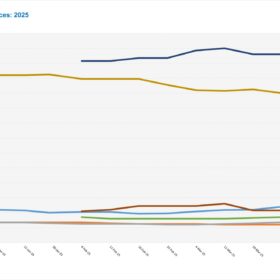Peru plans to reach 3 GW of PV capacity by 2028
Peru aims to add 2.5 GW of new PV capacity by 2028 through 14 solar projects, bringing its total installations to nearly 3 GW, according to the Peruvian Ministry of Energy and Mines (MINEM).
Polysilicon market steady amid challenging short-term outlook
In a new weekly update for pv magazine, OPIS, a Dow Jones company, provides a quick look at the main price trends in the global PV industry.
U.S. reshapes the non-China solar supply chain
The U.S. Department of Commerce (DOC) revised antidumping and countervailing duties (AD/CVDs) on Vietnamese and Malaysian solar products in December 2024. The move has reshaped the non-Chinese supply chain, with further use of tariffs likely under the new administration, explains InfoLink’s Corrine Lin.
AI-driven carbon management: The future of global corporate sustainability
The future of global sustainability hinges on clarity—where every tonne of carbon saved is measured, understood, and built upon. For corporations ready to lead, artificial intelligence (AI) isn’t a distant horizon; it’s the lens through which progress comes into focus.
PVH launches foundation system for solar installations on complex terrain
PV Hardware (PVH) has released PVH Terra, a foundation system designed to improve solar plant installation on challenging terrain. The system aims to improve stability in expansive soils, frost-affected areas, and sites with poor geotechnical conditions while reducing costs and environmental impact.
Empowering rural communities: The impact of solar cooking solutions
Solar cooking solutions are not just technological advancements but transformative tools for sustainability, health, and economic empowerment
US solar module prices rise as market absorbs tariffs
US solar module prices rose in December 2024 for the first time since last summer, driven by tariff adjustments and patent litigation uncertainty, according to Anza. While prices have since stabilized, module type, cell origin, and geopolitical factors continue to shape the market.
Long-term issues found in warehoused solar panels
Clean Energy Associates (CEA) is receiving more calls from solar developers concerned about warehouse panel damage. CEA senior engineering manager Claire Kearns-McCoy explains how improper handling, stacking, and storage conditions can lead to long-term issues.
Transforming discarded batteries into valuable resources
Rather than viewing battery recycling as waste management, it should be reframed as an economic and industrial opportunity. Advanced recycling techniques can recover up to 95% of lithium, cobalt, and nickel, reducing India’s reliance on raw material imports.
China solar module price rises for fifth straight week
In a new weekly update for pv magazine, OPIS, a Dow Jones company, provides a quick look at the main price trends in the global PV industry.















